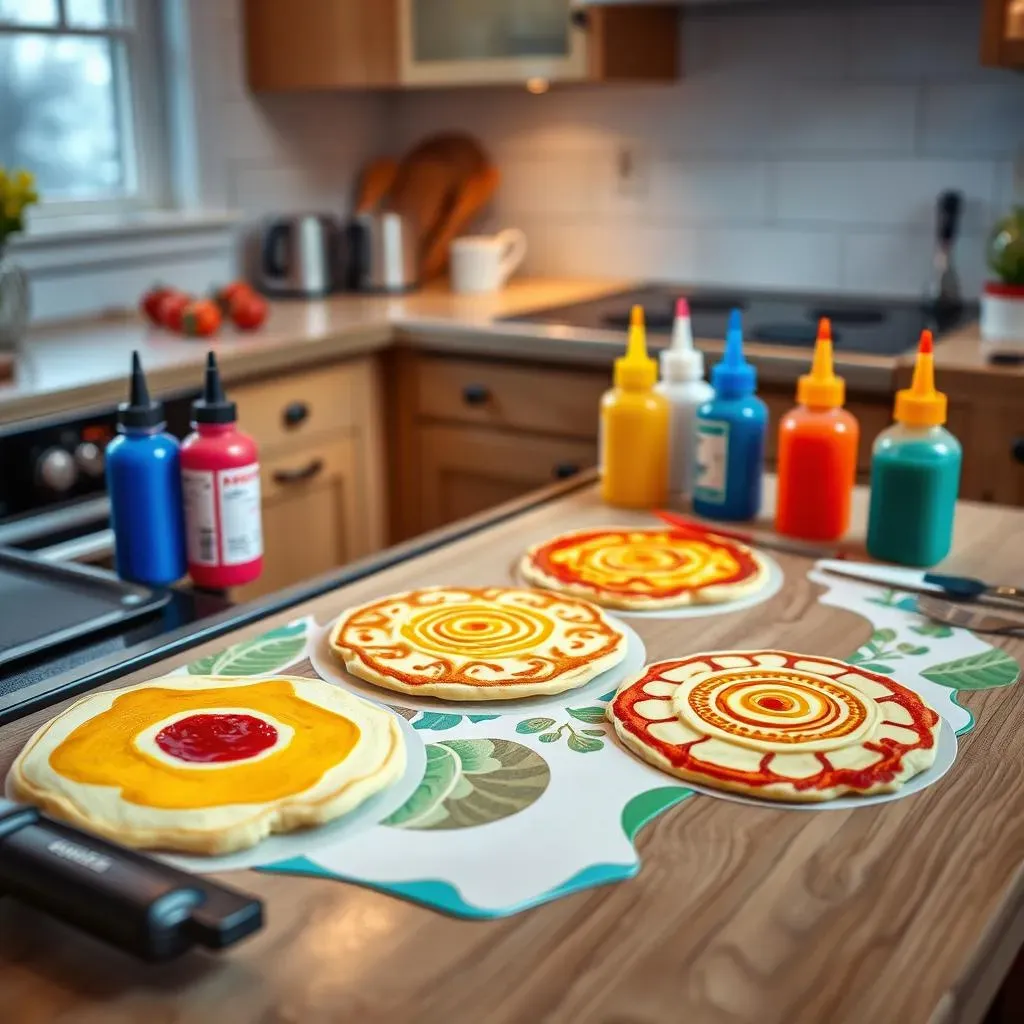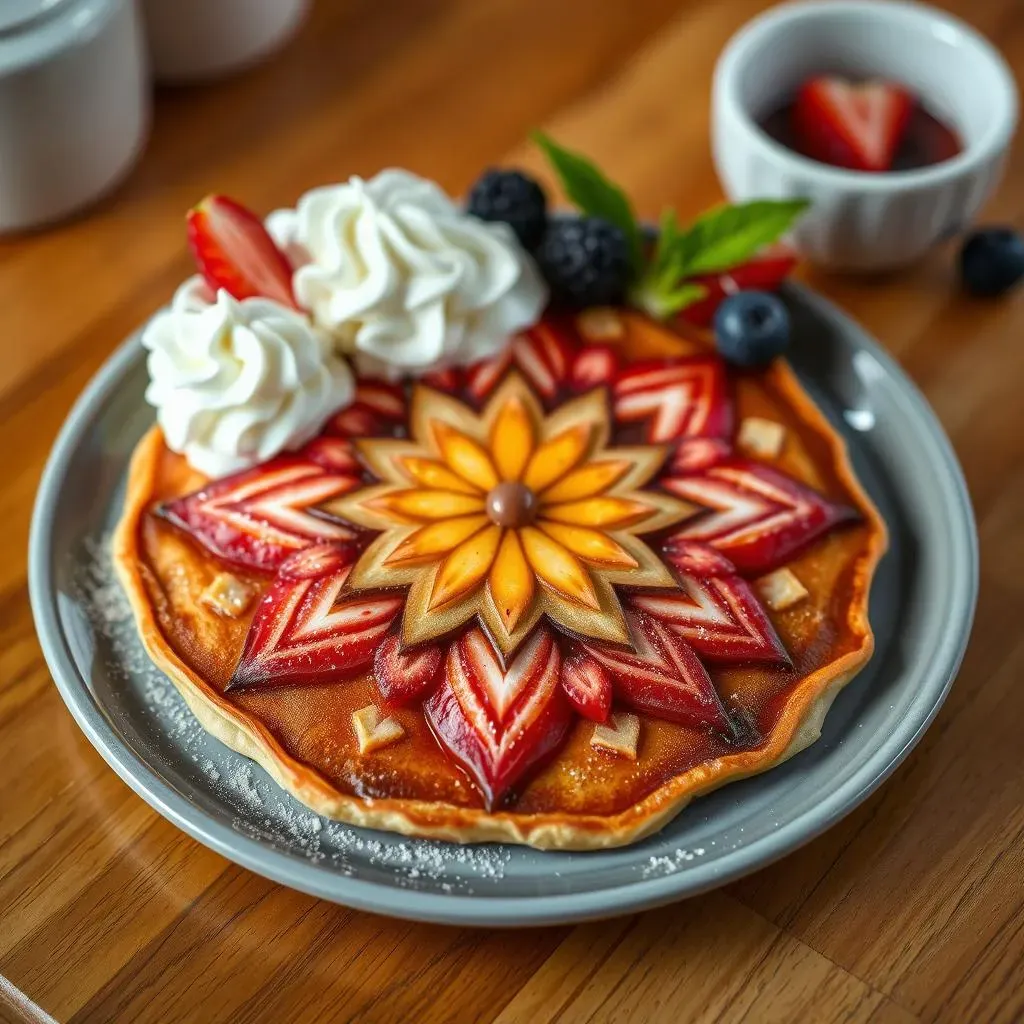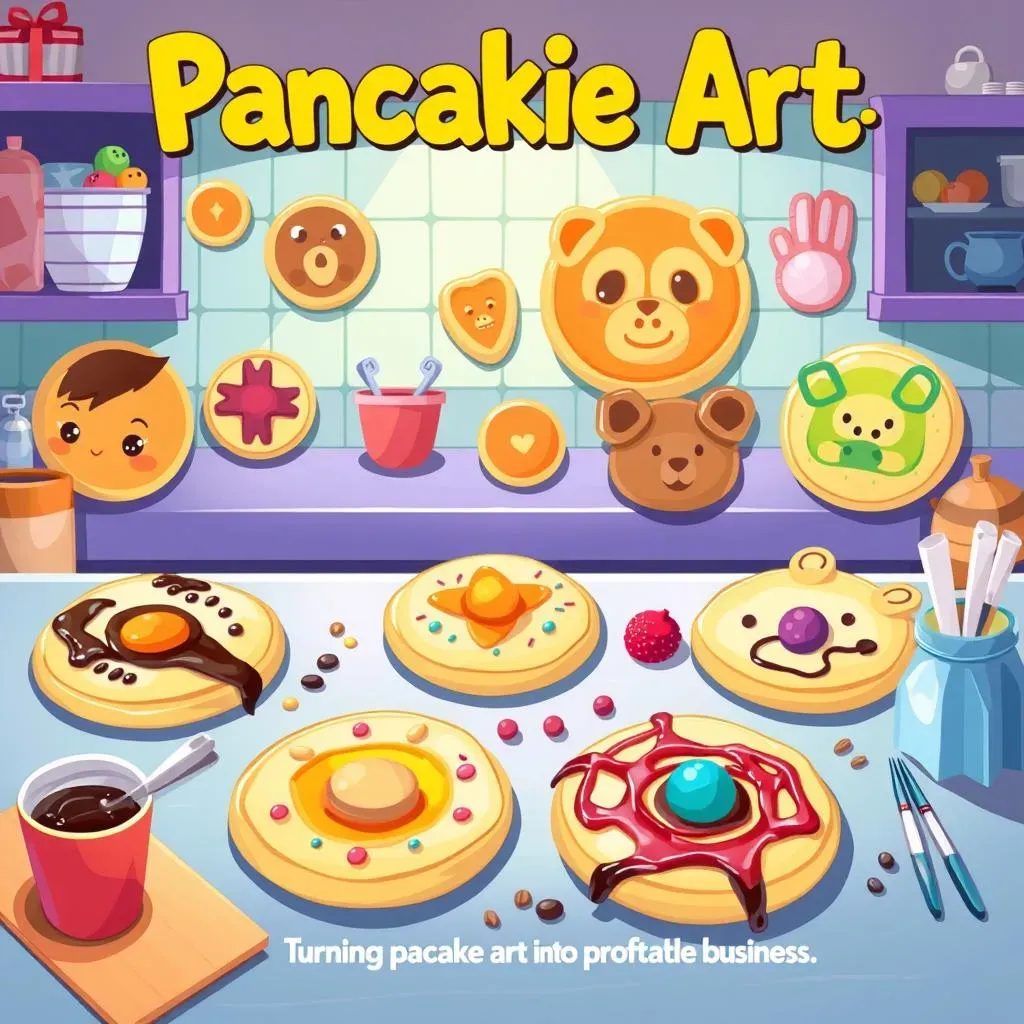Table of Contents
Ever watched a pancake transform into a work of art? It's not just a weekend hobby anymore; pancake art for professionals is a real thing, and it's taking the culinary world by storm. This isn't about making Mickey Mouse for the kids, we're talking about detailed portraits, intricate logos, and designs that'll make your jaw drop. If you're ready to take your griddle game to the next level, then you're in the right place. We'll start by getting you acquainted with the essential tools and techniques that pro pancake artists use. Then, we'll explore how to create stunning, eye-catching designs that'll wow any client. Finally, we'll look at the business side of things, showing you how to turn your passion into a profitable venture. So, if you're ready to become a true pancake artist, let's get started!
Mastering the Tools and Techniques of Professional Pancake Art

Mastering the Tools and Techniques of Professional Pancake Art
The Artist's Arsenal
Okay, so you wanna get serious about pancake art? First things first, you need the right tools. Forget that flimsy spatula and the beat-up frying pan; we're talking about precision instruments here. Think of it like a painter choosing their brushes. You'll need a good quality, non-stick griddle, a variety of squeeze bottles with different sized nozzles, and spatulas that are thin and flexible. And don't even think about using regular food coloring; gel colors are your best friend. They're way more vibrant and won't water down your batter. It's like upgrading from crayons to professional-grade paints.
Also, don't underestimate the importance of a good batter recipe. It's not just about taste; the consistency matters. You want a batter that's thin enough to flow smoothly through the nozzle but thick enough to hold its shape on the griddle. It's kind of like getting the perfect clay for pottery; too wet, and it's a mess; too dry, and it won't mold. You might need to experiment a bit to find the sweet spot, but once you do, you'll be golden.
Batter Basics and Color Control
Now let's talk about the magic of color. This is where you can really let your creativity shine. When mixing your batter, always start with a small amount of gel color and add more until you get the desired shade. Remember, the colors will darken slightly as they cook, so go a bit lighter than what you think you want. Also, prepare your colored batters in separate squeeze bottles, so they’re ready to go. It's like having your paint palette all set up before you start your masterpiece. You don't want to be scrambling for colors when the griddle is hot.
And don't forget about the cooking process. Low and slow is the name of the game. Keep your griddle at a low heat to avoid burning the pancake and to give the colors time to set. It’s like slow-cooking a steak, you're not in a rush; you're building flavor and texture. The goal here is to create a canvas where your designs can truly pop. Once you master the basics, the possibilities are endless. It's not just about making pancakes; it's about creating art that’s also delicious.
Tool | Purpose | Why it's important |
|---|---|---|
Non-stick Griddle | Cooking the pancake | Prevents sticking and burning |
Squeeze Bottles (various nozzles) | Dispensing batter | Allows for precise lines and filling |
Gel Food Coloring | Coloring the batter | Creates vibrant and lasting colors |
Thin, flexible spatulas | Flipping and maneuvering | Prevents tearing and keeps the pancake intact |
Creating Stunning Designs: A Guide for Professional Pancake Artists

Creating Stunning Designs: A Guide for Professional Pancake Artists
From Simple Shapes to Complex Creations
Alright, so you've got your tools and your batter, now it's time to get creative. Don't feel like you need to start with a photorealistic portrait right away. Begin with simple shapes and patterns. Think geometric designs, cartoon characters, or even just cool abstract swirls. It's like learning to draw; you wouldn't jump straight into a detailed landscape painting. Start with circles, squares, and triangles, then work your way up. The key here is to practice your control with the squeeze bottles. The more you practice, the steadier your hand will become, and the more intricate your designs can be. It’s like learning a new dance; you start with simple steps before you try the fancy footwork.
And remember, pancake art is all about layers. You usually start with the outline of your design and then fill it in. Think of it like sketching a drawing with a pencil before you add the paint. This way, you can create depth and dimension in your art. But pay attention to the order of colors you lay down. The colors you put down first will be the ones that show on top when you flip the pancake. It's a bit like reverse painting. The colors you want to be the most visible should be added first. It might seem counterintuitive at first, but you'll get the hang of it.
Adding Depth and Dimension
Once you're comfortable with basic shapes, start thinking about adding more detail. This could involve using different nozzle sizes to create varied line widths or incorporating shading techniques to give your designs more depth. You can also experiment with different textures by varying the way you apply the batter. Try dragging the tip of the nozzle through the batter to create textured lines, or use a spatula to dab the batter and create stippled effects. It's like working with different brushes and painting knives; each tool creates a different effect. The more you play around, the more you'll discover all the possibilities. Think of it as adding layers of detail to a drawing, you're not just filling in shapes; you're adding character and complexity.
Also, don’t be afraid to use reference photos. If you’re trying to recreate a logo or a portrait, having a good reference image is crucial. It's like having a blueprint when you're building a house. It’ll help guide your lines and make sure that your final product is true to the original design. And don't be discouraged if your first few attempts aren't perfect. Like any skill, pancake art takes time and practice. The more pancakes you make, the better you'll get. It's all part of the fun.
Technique | Description | Effect |
|---|---|---|
Varying Nozzle Sizes | Using different sized nozzles | Creates varied line widths |
Shading | Using lighter and darker batter | Adds depth and dimension |
Textured Lines | Dragging nozzle through batter | Creates visual interest |
Stippling | Dabbing batter with a spatula | Adds texture and pattern |
Mastering the Flip and Presentation
Okay, so you've poured your masterpiece, now it's time for the moment of truth: the flip. This is where many beginners get tripped up. The key is to be patient. Wait until the pancake has set, and the edges are starting to brown. Then, using a thin, flexible spatula, gently slide it under the pancake and flip it over in one swift motion. It's like flipping an omelet; you gotta be smooth and confident. Don't hesitate; just go for it. The more you practice, the less daunting this step will become. And remember, a slightly imperfect flip adds to the charm of a handmade pancake; it's not supposed to be perfect.
Finally, presentation is key. A beautifully designed pancake deserves a great stage. Don't just plop it on a plate and call it a day. Think about how you can enhance the visual appeal. Use fresh fruit, whipped cream, or a drizzle of syrup to complement your design. It's like framing a painting; the right presentation can make all the difference. And most importantly, remember to have fun with it. Pancake art is supposed to be enjoyable. So, relax, get creative, and let your inner artist shine.
The Business of Pancake Art: Turning Your Passion into Profit

The Business of Pancake Art: Turning Your Passion into Profit
Finding Your Niche in the Pancake Art World
So, you've mastered the art of the flip, and your designs are turning heads, now what? It's time to think about turning this passion into a business. The first thing you need to do is figure out your niche. Are you going to focus on events, like birthday parties and corporate gigs? Or maybe you want to specialize in creating custom pancake portraits for individuals? Perhaps you see yourself as a social media sensation, creating viral pancake videos. The possibilities are endless, but it's important to hone in on what you're good at and what you enjoy. It's like choosing a major in college; you want to pick something that aligns with your skills and interests. Once you've got your niche, you can start crafting your brand.
Think about what makes your pancake art unique. Is it your style, the types of designs you create, or the way you present your pancakes? This is your unique selling proposition, or USP. It's what sets you apart from all the other pancake artists out there. It's like finding your voice as an author, you want to sound different from everyone else. Once you've identified your USP, weave it into your brand. Create a logo, develop a consistent style for your social media posts, and build a website or online portfolio that shows off your work. It's not enough to just make awesome pancakes; you need to let the world know about them.
Niche | Description | Examples |
|---|---|---|
Events | Providing live pancake art at parties, weddings, and corporate events | Birthday parties, corporate team building, product launches |
Custom Portraits | Creating personalized pancake portraits for individuals | Family portraits, pet portraits, celebrity caricatures |
Social Media Content | Producing viral pancake art videos and tutorials | Time-lapse videos, creative animations, recipe demonstrations |
Educational Workshops | Teaching pancake art classes to aspiring artists | Private lessons, group workshops, online courses |
Pricing Your Art and Building Your Brand
Now, let's talk about the money side of things. Figuring out how to price your pancake art can be tricky. You need to consider the cost of your ingredients, the time it takes to create your designs, and the value of your artistic skills. Do some research and see what other artists in your niche are charging. It's like doing your homework before you ask for a raise. Don't undervalue yourself, but also, be realistic. As you gain experience and recognition, you can start to increase your prices. Remember, you're not just selling pancakes; you're selling an experience.
Building your brand is crucial for success. Social media is your best friend. Post high-quality photos and videos of your pancake art, engage with your followers, and be active in relevant online communities. It's like networking at a conference; you want to make connections and build relationships. And don't be afraid to reach out to potential clients. Contact event planners, local businesses, or anyone else who might be interested in your services. It’s like submitting a query letter to a publisher; you need to put yourself out there. The more people see your work, the more opportunities will come your way.
"The key is not to prioritize what's on your schedule, but to schedule your priorities." - Stephen Covey
Expanding Your Reach and Scaling Your Business
Once you've established your initial client base, it's time to think about scaling your business. This might involve hiring other artists to help you with larger events or developing a line of merchandise, like pancake art kits or custom spatulas. It's like expanding your restaurant; you need to add more tables and hire more staff to accommodate the demand. Consider collaborating with other artists or businesses to reach new audiences. Partnerships can be a great way to grow your brand and gain exposure. It's like co-authoring a book; you can reach a wider audience by combining your efforts.
And don’t forget about the power of online courses and tutorials. Creating video content can be a great way to share your skills and earn passive income. You can teach aspiring pancake artists how to create their own designs or offer advanced courses for more experienced artists. It's like writing a textbook; you can share your knowledge with the world and earn money at the same time. The key is to keep innovating, keep learning, and keep pushing the boundaries of what’s possible with pancake art. It’s not just a business; it’s a creative journey.